USA and Canada
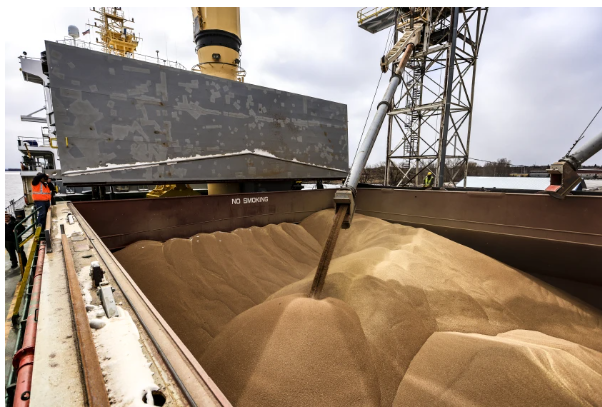
North American Grain and Oilseed Review: Canola turns around for strong finish
WINNIPEG – Intercontinental Exchange (ICE) canola futures closed higher on Friday, after overcoming earlier losses.
That’s despite hefty pressure from significant losses in global crude oil that put pressure on vegetable oils , as well as those in Chicago soyoil. Slight losses in Chicago soybeans added more pressure, while support came from upticks in soymeal, Malaysian palm oil and European rapeseed.
The market has projected good increases in stocks of canola, wheat and other grains when Statistics Canada releases its stocks report on Tuesday. The gains are to reflect the Prairies overcoming the drought in 2021.
The Canadian dollar was weaker at mid-afternoon Friday as the United States dollar surged upward. The loonie fell back to 74.70 U.S. cents, compared to Thursday’s close of 75.12.
Read More…

Canadian grain marketing expands its options with apps
A couple of Fortune 500 companies are expanding their Canadian crop marketing services.
StoneX Financial (Canada) Inc., a subsidiary of StoneX Group Inc., has launched its Farm Advantage mobile app, which provides growers with market data and intelligence.
Meanwhile, Bayer CropScience has bought Combyne Ag, another Canadian crop marketing management app formerly known as FarmLead.
The StoneX app is free and provides growers with market quotes, futures pricing, option premiums and historical futures charts.
It contains market analysis from StoneX analysts around the globe and commentary from the likes of fertilizer analyst Josh Linville and chief commodities economist Arlan Suderman.
Read More…
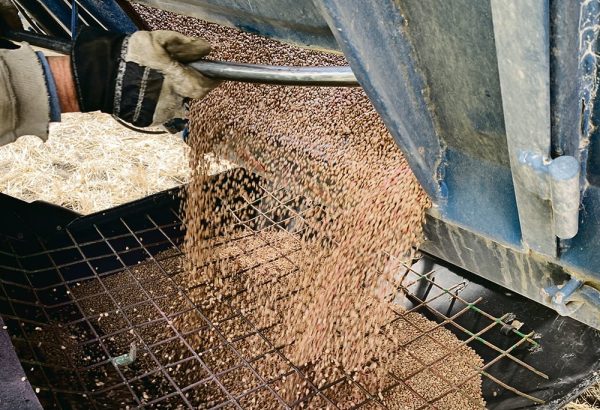
Pulse planting acreage trends down
Canada’s pulse acres are expected to fall slightly in 2023, according to Agriculture Canada’s Market Analysis Group.
Pea plantings are forecast at 3.21 million acres, a 4.6 percent decline. Lentils are projected at 4.27 million acres, a more modest 0.5 percent drop.
LeftField Commodity Research analyst Chuck Penner thinks the pea reduction will be more pronounced. He is forecasting three million acres of the pulse, a 10 percent reduction from last year.
“That’s a bit of a worrying trend, frankly,” he told delegates attending a market outlook session at the annual general meetings of Saskatchewan’s crop organizations in early January.
It would be the fourth year in a row of declining plantings, after peaking at 4.33 million acres in 2019.
“Really, it’s not the fault of peas,” said Penner. “Pea bids are historically pretty decent, but you have strong canola prices, you have strong red spring wheat prices.”
Read More …
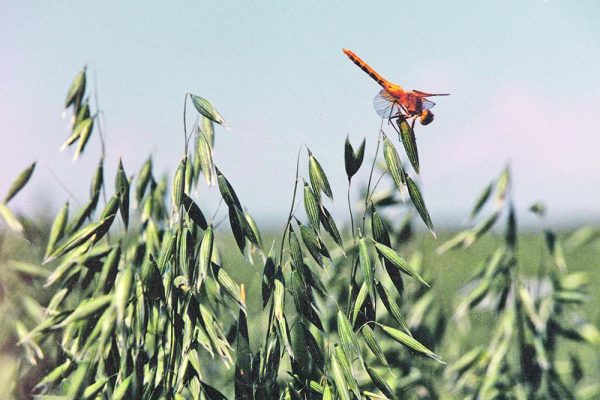
Canola goes up, organic goes down
A chart comparing organic acres in Western Canada to the price of canola would be simple: when canola falls, organic acres go up. When canola hits $20 per bushel, organic acres plunge off a cliff.
The organic sector doesn’t have official data for acres on the Prairies for 2021 or 2022, but there’s anecdotal evidence of a decline.
“What I’ve seen over the last three years is where they (farmers) totally quit organic and went 100 percent conventional,” said Alan McKenzie, who operates a 4,000 acre organic cattle and grain farm near Nesbitt, Man.
McKenzie was one of about 40 people who attended an organic conference at Manitoba Ag Days, a trade show held in Brandon.
He said the price gap between organic and conventional grains has narrowed in Canada.
Read more…
New Zealand
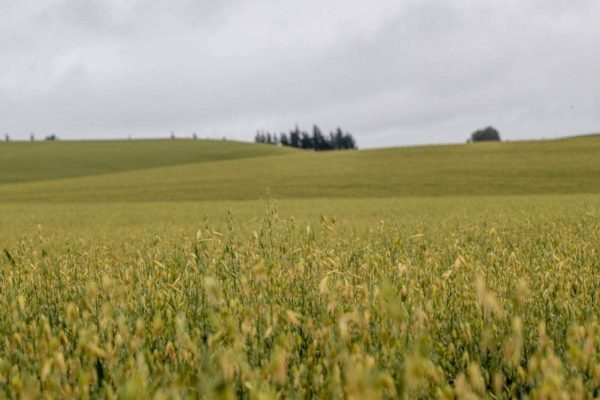
Oat milk trade-off: Fewer greenhouse gases, but less profit, study shows
Oat milk has a much lower greenhouse gas footprint than cow milk for every litre produced, a new study shows, but farmers make less money from it.
The study, commissioned by Boring Oat Milk and Agmardt, showed oat farming released only 7% of the greenhouse gases that were emitted by dairy farming on a per-litre-of-milk basis.
Oats also used 70% less land than dairy to produce a litre of milk.
The debate around the nutritional and environmental benefits of oat and cow milk continues, with Riddet Institute research last year showing plant-based milk alternatives contained only a fraction of the nutrition of cows’ milk.
Boring Oat Milk founder Morgan Maw said the latest research was commissioned to get data on the impact of oat farming in the New Zealand context, because most data used was from international studies.
Read More here...
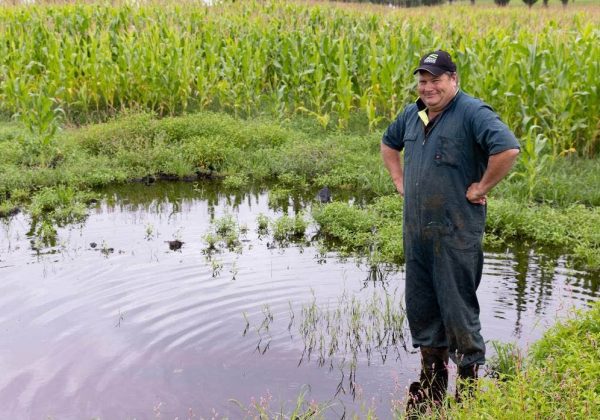
Wet weather’s impacts on stock feed could bump up farmer and consumer costs
Waikato farmers and contractors are worried ongoing wet weather could hit stock feed supplies, with shortages potentially adding to farmer and consumer costs.
Grass cover on Waikato dairy farms is said to be good at the moment because of rain in recent months but maize production is down.
It’s feared the wet weather’s ongoing impacts on producing maize and other supplements could cause feed shortages later in summer, push up costs and lead to animal welfare problems.
The situation could be “as big as the labour shortage” for farmers.
Rural Contractors NZ president Helen Slattery, of Matamata-based Slattery Contracting, said if wet weather continued to affect maize growth – and the ability to harvest it – this could raise farmer costs and consumer prices.
Read More here…
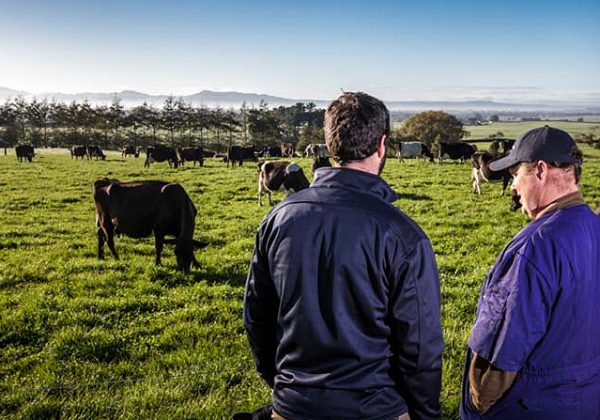
The trend of rural demographics concerns Guy Trafford, and those concerns aren’t eased by data supplied by Stats NZ
In the process of trying of looking at what the average age of farmers in New Zealand was I came across an article which, while a couple of year since being first published, added to the vague uneasiness about the state of New Zealand farming.
It was a Stats NZ publication which mentioned that between 2002 and 2019 New Zealand has lost over 2 million hectares (13%) of productive farmland. Over this period while the average farm size increased the number of individual farms decreased by nearly 20,000 from just under 70,000 farms to just under 50,000.
The average size has increased from 224 ha in 2002 to 274 ha by 2019. Seeing a reduction in farmed area is not always a bad thing as during the late 1970’s farmland expanded with the government incentives into areas which hindsight has shown to be unsustainable to be farmed (i.e. steeper ’scrubland’ etc.) when the subsidies were removed. Some of this land has now returned to native shrubs.
Read More here…
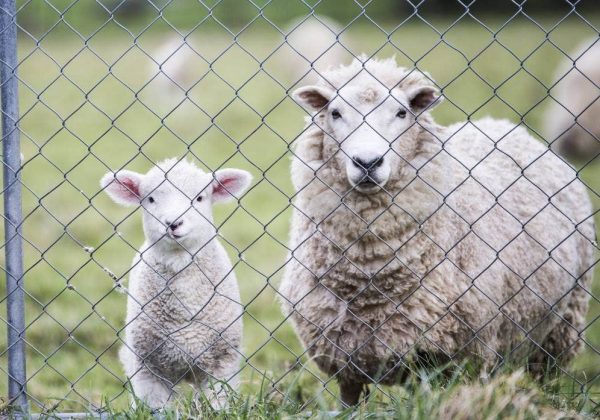
Natural fibres are all the rage so why not wool?
Wool is sustainable, has properties that cannot be replicated by plastic, and is better for the planet than synthetic alternatives, so why is it almost worthless for farmers?
Campaign for Wool general manager Tom O’Sullivan blames a lack of innovation, limited local processing capacity, and poor industry collaboration as reasons why there is low demand and price for strong wool.
O’Sullivan said a big problem was that strong wool was sold at auction to overseas buyers, but the industry lost track of where and how it was used after that.
Treating it like a bulk commodity was part of the problem, he said.
In 2010 the O’Sullivan’s family farm wool brought in $80,000 a year, but it now cost the farm about $25,000 a year.
Read More here…
Australia
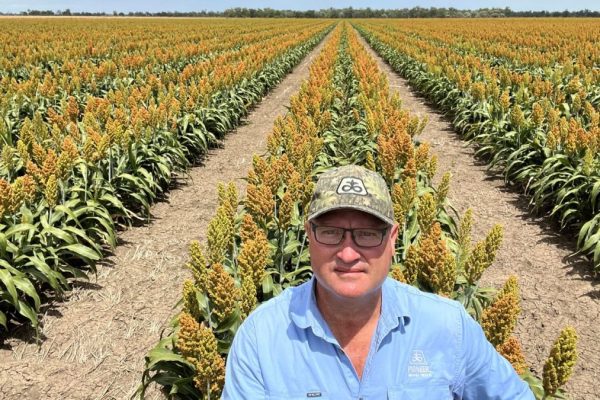
Feedgrain Focus: North softens, south steady
PRICES for feedgrain in the northern region are under some supply-side pressure as the sorghum harvest gets off to a slow start, while the southern market is trading mostly sideways.
Some bearish news has hit the market today with Viterra Australia forecasting the national wheat crop now in the final stages of harvest will weigh in at 41 million tonnes.
This compares with ABARES estimate of 36.6Mt, also a record.
Estimates for the 2021-22 crop sit at 36.3Mt from ABARES and 38Mt from Viterra.
Australia’s three biggest bulk handlers – CBH Group in Western Australia, Viterra based in South Australia, and GrainCorp in eastern states – have now ended their weekly reports from the 2022-23 harvest.
Read more here

Fertiliser sales surge as growers swoop on lower prices
THE annual surge in fertiliser sales is off to a delayed start as growers decide they have waited as long as they can to see further price falls ahead of winter-crop planting.
Soil testing is also under way to determine what type of fertiliser is needed to get the 2023-24 crop off to a good start following what for most was a bumper harvest.
While fertiliser prices have fallen around 25pc from their peak last year, they are still well above the long-term average, but with grain prices holding up, sources expect growers will not limit their inputs based on cost.
WA supply chain ready
In Western Australia, CSBP Fertilisers general manager Mark Scatena said despatches of seeding fertilisers have been slower than previous seasons.
Read more here …
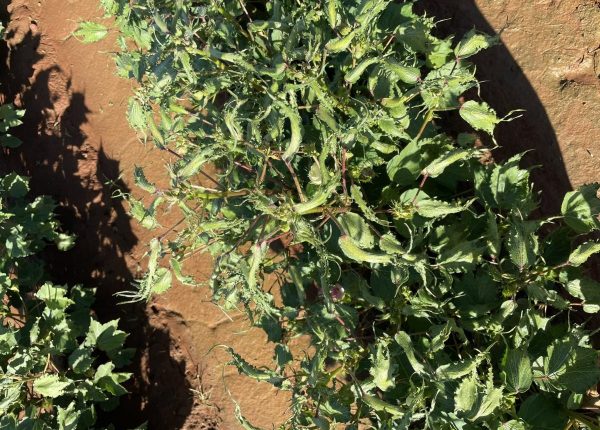
Growers unite to target spray drift amid damage reports
TWO of Australia’s peak agricultural bodies have approached government regulators and enforcement agencies about the potential for tougher laws and expanded enforcement activity amid an increase in the number of spray drift incidents, estimated to have caused millions of dollars in damage.
Farmers have voiced their concerns following a number of moderate to severe spray-drift incidents.
These have occurred on the Darling Downs, St George, and Dirranbandi districts in Queensland, in the Mungindi district on the Queensland-New South Wales border, and in the Gwydir, Lower Namoi, Walgett and Macquarie Valley regions of NSW.
Cotton Australia (CA) general manager Michael Murray said cotton crops had been impacted but so too have other crops, and it was unclear in each location which chemicals were responsible.
“Media reports have suggested 2,4-D spray drift is responsible in some locations and while the damage is consistent with phenoxy herbicides, there is currently no definitive scientific evidence in the form of residues analysis to confirm that,” Mr Murray said.
Read more here…

CBH sets more supply-chain records
WESTERN Australian bulk handler CBH Group has reported its best rail performance for January on record, with rail and shipping performance continuing above the past five-year average figures.
CBH railed 989,000 tonnes to all four ports and the Metro Grain Centre (MGC) in January 2023, setting a record and surpassing the previous one of 971,000t set in January 2019.
This achievement also marks the seventh consecutive month of record rail performance starting in July 2022.
From a road movement perspective, 864,000t was moved by road to port and MGC, inclusive of depot moves.
Road outloading also continues to perform strongly, well above the previous five-year January average of 800,000t.
Read more here…
South America
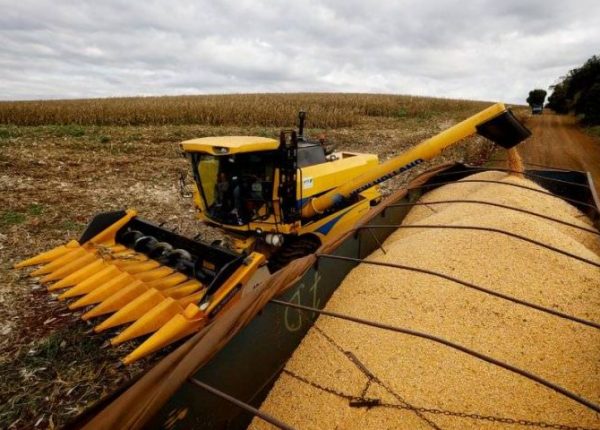
Southern Brazil pork and poultry farmers concerned with Chinese demand for “overpriced” corn
Expectations of large Brazilian corn exports to China in 2023 are worrying Brazil’s meat companies, according to a statement from Santa Catarina’s meat processors lobby Sindicarne this week. The group said competition from Chinese buyers is already reducing local supplies and making corn used to feed poultry and pork an “overpriced” commodity.
“Even with the sector being more prepared for negotiations and more attentive to its stocks and purchases, there is always competition from the international market,” Sindicarne said. “For 2023 the signs are worrying.”
Brazilian corn exports to China were cleared late last year after both nations updated trade protocols. Since then, several vessels have been booked by companies like Cofco CNCOF.UL.
At Brazil’s southern port of Paranagua, for example, corn exports jumped to almost 570,000 tons through Jan. 29 driven by China. This corresponds to a 161% rise in volume compared with the whole of January 2022, the port authority said.
Read more here…
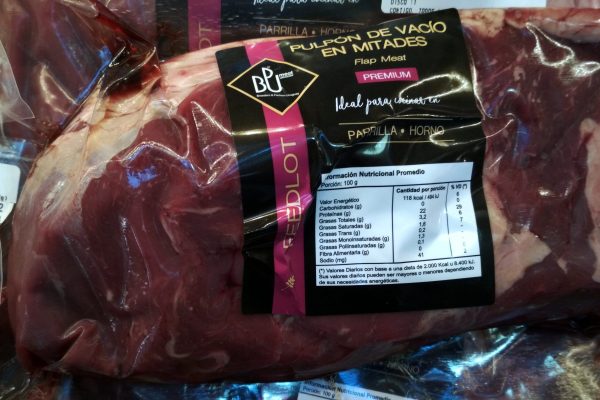
Uruguay cattle breeders fear ‘monopoly conditions’ as Brazilian companies control most of the beef industry
Brazil’s protein producer giant Minerva Foods issued a note to the market communicating the purchase of state-of-the-art Breeders and Packers Uruguay (BPU Meat) abattoir and processing plant for USD 40 million. The conclusion of the deal is still pending approval by the Uruguayan authorities.
BPU is a subsidiary of the NH Foods Group, based near the city of Durazno, in central Uruguay, and is one of the most modern meatpacking plants in Uruguay and South America.
The unit bought by Minerva has a slaughtering capacity of 1,200 cattle per day thanks to its cutting-edge technology, ensuring the highest quality and safety standards for the meat produced and exported in Uruguay.
Read more here

Argentina’s Grain Exports Plunge
Argentina anticipates exporting 5.7 million tonnes of soybeans in 2022–2023, a significant drop from its peak of 10 million tonnes a few years ago. To make matters worse, Agricultural export revenue is declining at a time when Argentina’s economy is experiencing a severe recession.
The Foreign Agricultural Service of the US Department of Agriculture reported this. Wheat production this year is estimated to be 12.5 million tonnes, far below the record crop of 22.1 million tonnes in 2021–2022. Exports are expected to be 7.5 million tonnes, less than half of the record total.
Argentina’s agricultural sector has been adversely affected by a prolonged drought, according to the Centro de Exportadores de Cereales (CIARA-CEC). This resulted in a 61% decrease in grain and oilseed export revenue in January compared to the same month in 2022. Moreover, exports in January totaled $928.37 million, a 75% drop from December.
According to Reuters the lack of rainfall in Argentina has also delayed planting of the local soybean and corn crops, while cutting wheat output by nearly half.
Read more here…
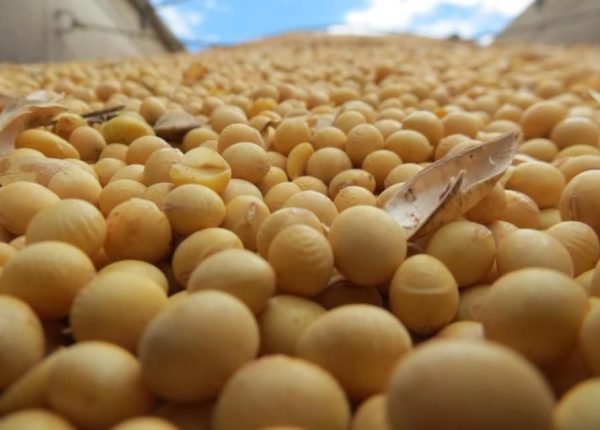
Argentina soybean crop struggling
BUENOS AIRES, Argentina — The Argentinean soybean crop is suffering due to drought conditions.
Indiana Soybean Alliance board members and staff saw the damage up close during a recent trip to the country.
“The crop is late, and we’re seeing varying stages of development,” said Mark Legan, a farmer from Coatesville.
“They’re in a multiyear drought, this year more so than others. The winter wheat crop was basically a failure. A lot of it didn’t even get harvested.”
Soybean development ranges from just planted to emerging to blooming, with some starting to develop pods.
“This is basically the end of July, Indiana time,” Legan explained. “They should be setting a lot of pods on soybean plants.
Read more here…
Food Updates
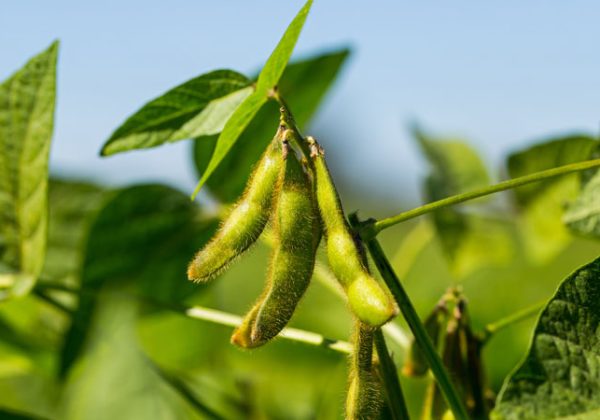
Soy sits at the centre of a more circular economy
Farmers drive advances in sustainability every single day as they seek to protect and preserve both precious farmland and the overall environment when producing the food, feed, fuel and other products that we all depend on.
Today, the positive impacts of agriculture and agricultural products stretch far beyond farm to fork. While supporting a safe and sustainable food supply remains a primary focus, every day we’re finding new ways to support more circular and sustainable systems in industries beyond the food supply chain.
These practices start on the farm, where efforts to grow more using fewer resources are contributing to global endeavours to reduce carbon in the atmosphere and lessen the impact of climate change. Additional benefits to sustainable farming practices and emerging opportunities like carbon capture programmes include new ways for farmers to realise benefits, not only for their own operations, but throughout the global economy.
Read more here…

Food innovation trends in 2023 – what’s on the horizon?
We are faced by a variety of urgent challenges that need to be addressed with innovation from the agrifood community. So, when predicting trends in food innovation, we’d have a lot to cover, however the top three trends that stand out for me for 2023 are cultivated meat, regenerative agriculture and the role of data.
The cultivated meat boom
We’ve all heard of the plant-based boom, but as demand shifts from meat ‘alternatives’ to ‘real life’ meat that is easy on the environment and animal welfare, cultivated meat could play a huge role in the future of our food system.
We already know that traditional animal-based food products generally carry a heavier carbon footprint compared to meat alternatives, but where are we now with cultivated meat innovation?
The origin of cultivated meat is up for debate, with some arguing that French biologist Alexis Carrel was the first in the game after he kept a piece of chick heart muscle alive in a petri dish in the early 1900s
Read more here…

Could a cup of coffee with milk have an anti-inflammatory effect in humans?
Researchers from the University of Copenhagen, Denmark, have found that adding milk to a cup of coffee combines proteins and antioxidants which doubles the anti-inflammatory properties in immune cells.
Antioxidants known as polyphenols are found in humans, plants, fruits and vegetables. This group of antioxidants is also used by the food industry to slow the oxidation and deterioration of food quality and thereby avoid off flavours and rancidity. Polyphenols are also known to be healthy for humans, as they help reduce oxidative stress in the body that gives rise to inflammation. Indeed, coffee beans are filled with polyphenols, while milk is rich in proteins.
But much remains unknown about polyphenols. Relatively few studies have investigated what happens when polyphenols react with other molecules, such as proteins mixed into foods that we then consume.
Read more here
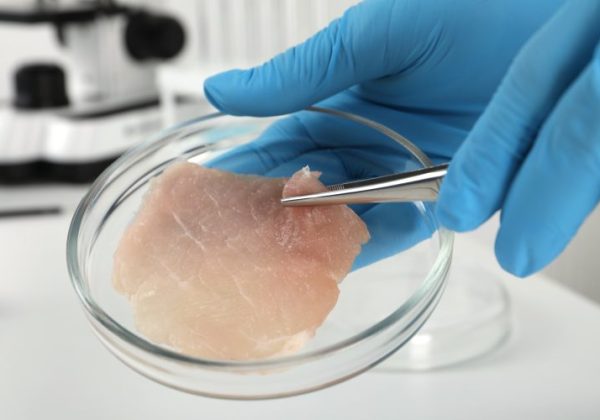
Scientists produce world’s first cultivated steak
A team of scientists at 3D Bio-Tissues (3DBT) have announced that they have produced the world’s first 100 percent cultivated steak.
The steak fillet, reportedly made entirely from pork cells, measured nine cm in width, four cm in length and one cm in height, making it the same shape and size as a small fillet of traditional pork meat. The scientists have also said that the fillet replicates pork’s flavour and texture.
Produced using a cell booster that is reportedly serum-free and animal-free, 3DBT claim that the fillet is 100 percent meat and, with the help of City-mixTM (a patented media supplement which eliminates the requirement of conventional plant-based scaffolds, blends or fillers), 3DBT has said that it believes that “this is the world’s first 100 percent cultivated pork steak to be produced and tasted”.
Labelling this as a “milestone”, 3DBT are now planning to produce a showcase product. This will take the shape of a full-scale fillet of cultivated pork that is set to be presented, cooked and eaten at a public event in the coming months.
Read more here…
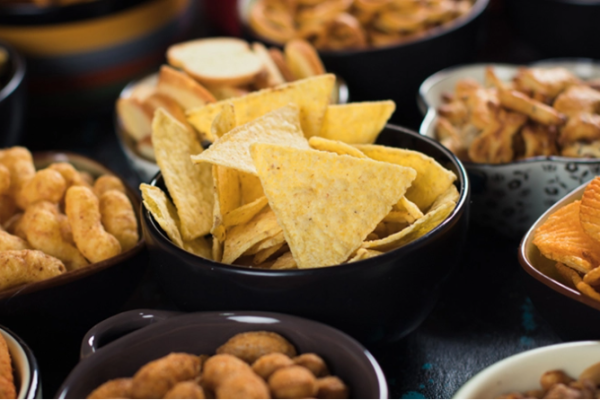
Research shows impact of ‘hyper-palatable’ foods across four diets
First described by Associate Professor Tera Fazzino from the University of Kansas (KU), US, in 2019, “hyper-palatable foods” have specific combinations of fat, sugar sodium and carbohydrates that make them artificially rewarding to eat and harder to stop consuming.
Using previous study data, researchers from KU and the US National Institute of Health sought to determine what characteristics of meals were important for determining how many calories were eaten. They found that three meal characteristics consistently led to increased calorie intake across four different dietary patterns: meal energy density (calories per gram of food), the amount of hyper-palatable foods and how quickly the meals were eaten. Protein content of the meals also contributed to calorie intake, but its effect was more variable.
“We wanted to know how hyper-palatable characteristics of foods, in combination with other factors, influenced how many calories a person consumed in a meal,” said Fazzino.
Read more here…


